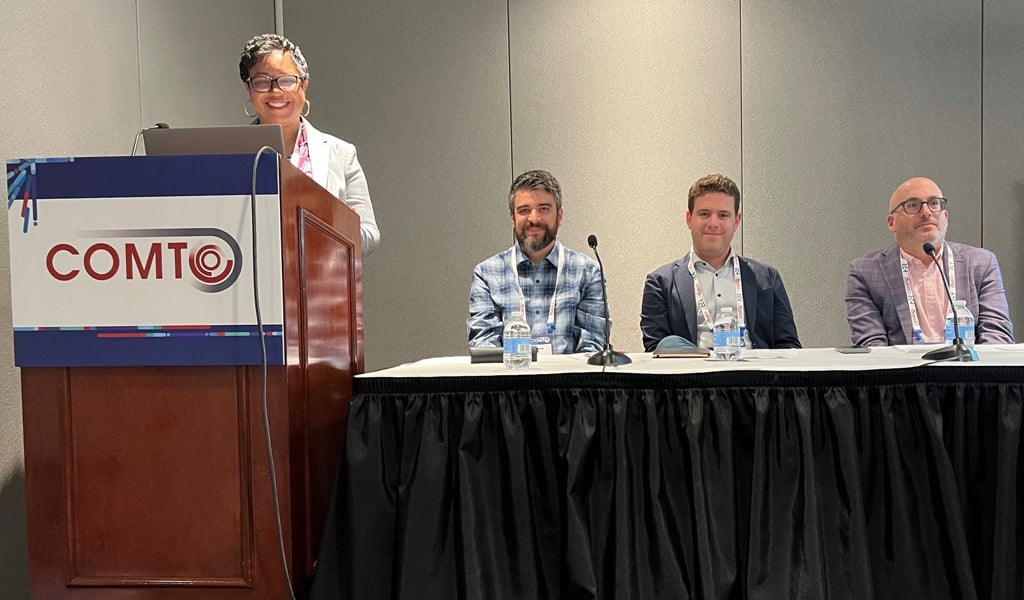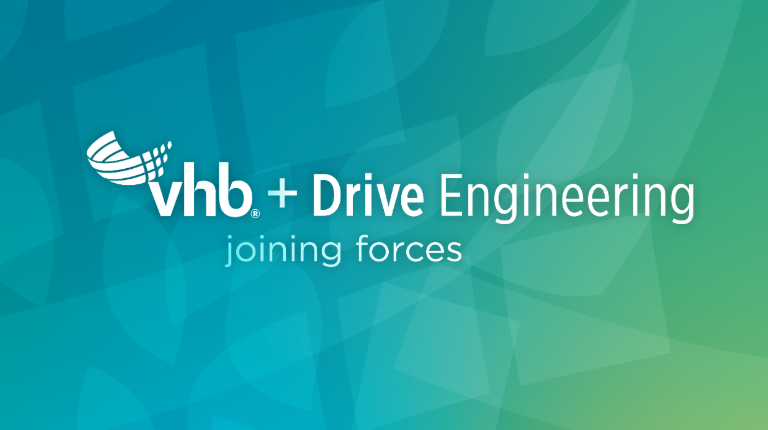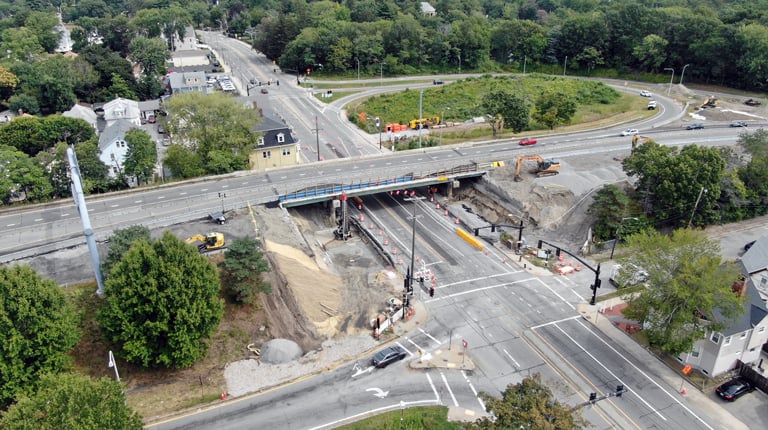VHB recently participated in the Conference of Minority Transportation Officials (COMTO) National Meeting & Training Conference in New York. This event brought together transportation agencies, corporations, small businesses, non-profits, academic institutions, and communities to explore collaborative efforts aimed at delivering transportation solutions that serve all members of a community.

Nicole Bennett, Community Impact & Resilience Strategist, moderated a panel entitled "Smart Connections: Leveraging Technology to Enhance First and Last Mile Access for Thriving Communities." This panel highlighted the MTA’s revolutionary First and Last Mile Toolkit. Joining her on the panel were Michael Goldemberg, Transit & Rail Planning Lead, Andrew Vitale, Software Engineer, and Matthew Kalish, Project Manager, Transit & Rail to talk about how this innovative toolkit is transforming community-centered transit access and assisting municipalities in planning sustainable infrastructure improvements.
The First and Last Mile Toolkit is a cutting-edge, web-based application developed by VHB for the MTA to assist municipalities in planning and executing infrastructure improvements around Metro-North Railroad (MNR) and Long Island Rail Road (LIRR) stations. The primary goal of the toolkit is to improve access to public transportation by encouraging walking, biking, and shuttle services, thereby reducing reliance on single-occupancy vehicles. Decreasing the demand for station parking can also facilitate transit-oriented development on land currently occupied by surface parking lots.
Utilizing Esri's ArcGIS Enterprise technology, the toolkit offers an interactive, map-centric platform that empowers local governments, planners, and developers with comprehensive mapping and analysis tools. These tools enable the identification of gaps in pedestrian and bicycle access, recommend targeted improvements, and guide strategic multimodal investments.
A noteworthy example of the toolkit's impact is its use by the Town of Riverhead, which secured a $24 million RAISE Grant from the U.S. Department of Transportation (USDOT). By employing the toolkit to chart critical bike and pedestrian enhancements around its LIRR station, Riverhead was able to craft a persuasive case for federal funding, leading to significant local infrastructure improvements and increased public transit access.
VHB’s presentation underscored how technology-enabled planning tools are shaping the future of transportation by providing innovative solutions for enhancing community connectivity. Attendees gained deeper insight into how municipalities can leverage these tools to improve mobility and implement effective FMLM solutions to create vibrant, sustainable communities.
Discover how VHB collaborates with transportation agencies to deliver innovative solutions and cutting-edge planning tools that are paving the way for transformative change.
For more information about the MTA’s First- and Last-Mile Toolkit, please reach out to Michael Goldemberg or Matthew Kalish.


